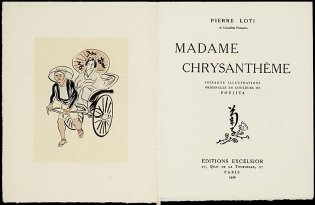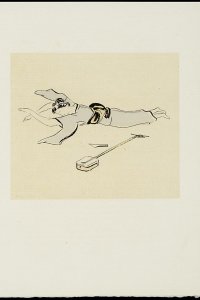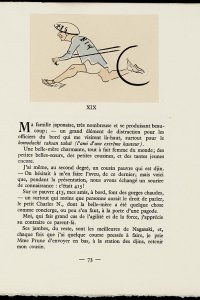Madame Chrysanthème
Year: 1926
Author: Pierre Loti (1850 - 1923)
Artist: Tsuguharu Foujita (1886 - 1968)
Publisher: Éditions Excelsior
Bibliographical description
Description: Madame Chrysanthème / Pierre Loti ; ill. orig. en couleurs de Foujita. – Paris : Éditions Excelsior, 1926. - 210 p., [17] bl. pl. : ill. ; 26 cm
Printer: Arrault et Cie. (Tours)
Edition: 546 copies
This copy: Number 191 of 425 on Arches
Bibliography: Bénézit 5-603 ; Carteret VI-245 ; Mahé II-707 ; Monod 7312
Shelfmark: KW Koopm L 487
References
- Tristan Klingsor, 'Foujita', in: L'art et décoration, 51 (1927) Jan., p. 111-118
- Michel Melot, L'illustration: Histoire d'un art. Genève, Skira, 1984
- Paul Morand, Foujita. Paris, Chroniques du jour, 1928
- Allain Quella-Villéger, Pierre Loti: Le pèlerin de la planète. Bordeaux, Aubéron, 1998


